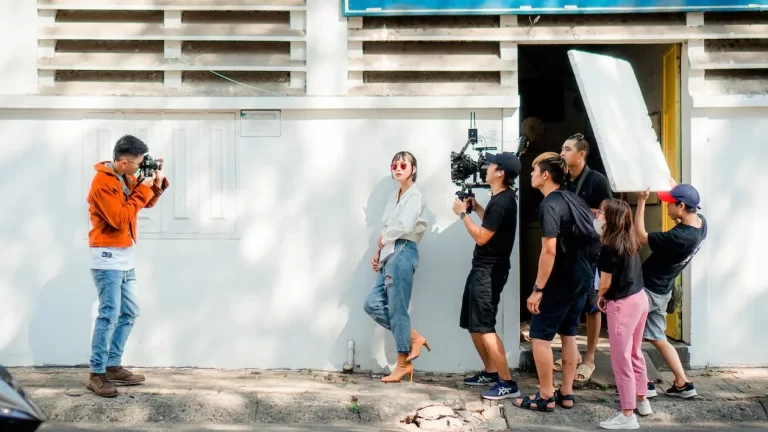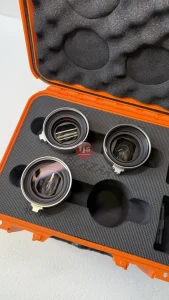Lighting
Another crucial aspect of filmmaking is lighting. Proper lighting can enhance the mood and atmosphere of a scene and make your footage look more professional. Natural light is great, but it can be unpredictable – consider investing in artificial lights to ensure consistent lighting conditions. Softbox lights are a popular choice as they create even, diffused light that’s flattering for subjects. When setting up your lights, think about the direction and angle of the light source – this can affect the shadows and highlights in your shot. Don’t forget to white balance your camera to ensure accurate colors. As with all aspects of filmmaking, practice is key – experiment with different lighting setups and find what works best for each scene. With these essential tools and techniques in hand, you’re ready to start bringing your creative vision to life on screen!
Sound on Filmmaking
Clear sound is just as important as good visuals in filmmaking. Invest in a decent microphone and learn how to capture high-quality audio on set. It’s essential to record clean dialogue, so make sure your microphone is close enough to your actors and that there are no unwanted background noises. A boom microphone can be helpful for capturing audio from a distance, while lavalier microphones can be attached directly to your actors for more natural sound. Make sure you monitor your audio levels during recording and use headphones to check for any issues. In post-production, you can enhance your sound with effects like music and sound effects – but always make sure they complement the story you’re telling rather than distract from it. With these tips in mind, you’ll be well on your way to creating films with great sound!
key aspect of filmmaking that can often be overlooked but is crucial to the success of a project? It’s pre-production. This is the planning stage where you develop your idea, write a script, storyboard your shots, scout locations, and cast actors. A well-planned pre-production phase can save time and money during filming and lead to a more polished final product. Don’t skip this important step! Once you have your plan in place, it’s time to start filming. Remember to stay organized on set and communicate clearly with your crew. Take multiple takes from different angles and distances to give yourself options in the editing process. When it comes time to edit, use software like Adobe Premiere or Final Cut Pro to piece together your footage into a cohesive story. Add sound effects, music, and color grading for a professional finish. With these tips in mind, you’re well on your way to becoming a successful filmmaker! Sound
Filmmaking Editing software
After filming your footage, it’s time to edit your project. Editing software like Adobe Premiere or Final Cut Pro can help you piece together your footage into a cohesive story. Take the time to organize your clips and create a rough cut before diving into the details. Experiment with different cuts and transitions to find what works best for each scene. Add sound effects, music, and color grading for a professional finish. Remember that editing is a creative process – don’t be afraid to take risks and try something new. And most importantly, stay true to your vision and the story you want to tell. With these tips in mind, you’re well on your way to becoming a successful filmmaker!
Gimbal equipment
A piece of equipment that can take your filmmaking to the next level is a gimbal. A gimbal is a stabilizer that helps eliminate camera shake and create smooth, fluid shots. They come in a variety of sizes and price points, so do your research to find one that fits your needs and budget. When using a gimbal, make sure to balance it properly and practice using it before filming on set. With the right technique, you can create stunning tracking shots and dynamic movements that will add visual interest to your film. Remember, while having access to the latest gear can certainly enhance your production value, it’s not everything. Focus on telling a compelling story with strong visuals and audio, and always be open to learning new techniques and experimenting with different approaches. Happy filmmaking!








